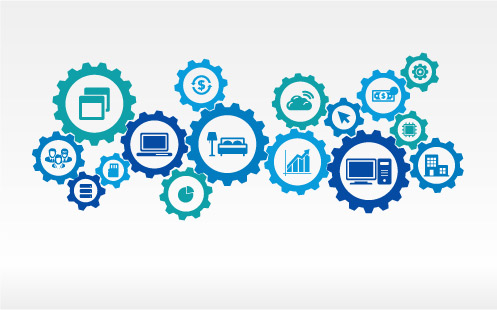Before meaningful hospitality software, property owners would rarely reset rates. The common approach of set it and forget was dominant. That meant a guestroom was generally priced the same for an extended period of time, such as the entire season or year, with little consideration given to demand trends.
For most of the history of the travel business, that was good enough. Not anymore!
Hotel technology has completely transformed rate management. No longer a several times a year practice, rate setting became the sweet science known as revenue strategy, the art of
That means taking a wholly scientific approach to creating a rate structure that will constantly change due to market demands. It’s why you may see ADR increase even as occupancy stagnates.
But you can do it too. There’s no need to have a degree in engineering and/or math from MIT to make sure your property is maximizing opportunity. The right type of hotel Property Management System (PMS) handles real time rate management, helping to ensure the best price being charged for a room is always the highest price your market(s) can bear.
Before the advent of cloud-based PMS systems, property decision makers were limited to how they could maximize rate. The traditional way was to set a rate for a specific day, then maintain that rate until a certain occupancy was obtained. Then, rate would be bumped up until a certain amount of additional rooms were filled.
Though that was the most logical way to handle rate management at the time there was no way to easily determine if the rate being asked was actually the maximum rate that could be charged. Hoteliers were left wondering if the room they sold for $75 could have sold for $85.
The right PMS can help hoteliers manage stay restrictions such as Minimum Length of Stay, Closed to Arrival, and special event rates. That means revenue specialists can help ensure rooms aren’t left empty because someone only booked a room on the first day of that amazing food festival coming to your town. Now rooms can be sold only to people desiring to stay the entire event.
Additionally, a modern, web based PMS generally contains many new features legacy systems simply don’t have the programming power to manage.
For example, leveraging the most market opportunity for your revenue strategy must include online hotel booking software that alleviates the hours and hours of manual rate implementation once required. Now, the most efficient way to effectively seize and maximize rate opportunities is by having reservations software that helps to ensure your highest profitability possible.
Here’s some other features we recommend to include in an online PMS to compete in today’s complex operating environment:
- Your hotel PMS should provide the power to utilize the Best Available Rate (BAR) pricing strategy. That means with a click of a button, you have the ability to move rates at all your hotels or a single property to what the market will bear.
- Adapt all rates to respond to changes in the market, while optimizing revenue opportunities. This function will help you leverage happenings such as a major storm that closes the local airport.
- Threshold alerts that warn you of increases or decreases in rooms sold. Understanding what is or isn’t being sold can help you adjust rates without turning away people rate shopping.
- Ability to set automated revenue management rules to efficiently manage inventory value. This allows the system to alert you based on how many rooms are still available on a specific date.
- Adjust third party sales. The ability to put in selling limits for wholesale rate plans. This helps to ensure you are not accidentally booking rooms at a lower rate when a customer is willing to pay more for the same room on the same day.
To be effective in the highly competitive hotel industry, it’s important to invest in a modern, cloud-based, PMS system. Without one, you may not be maximizing your strategy to meet revenue goals.





